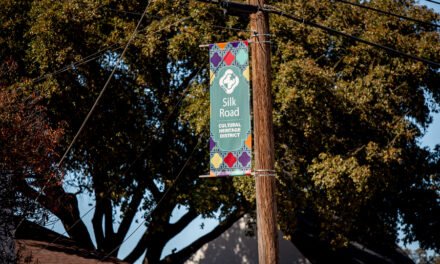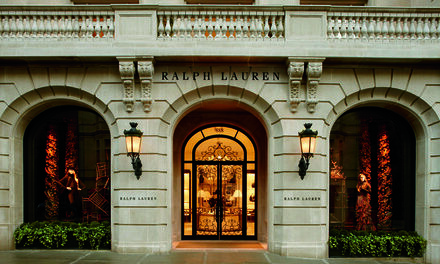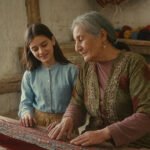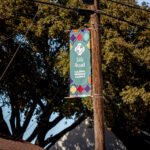
From the cloak of Wadi Rum serenity to the nutrient-rich mud from the Dead Sea, Jordan delivers to the heart and soul.
Why do we travel? Most of us have everything we need within a few miles of home: a place to sleep, our jobs, luxuries of life and entertainment and more. So what is it? For the majority of pleasure travelers it’s simple: the eternal unveiling of the mysteries of a dissimilar land, the search for the perfect view and clearest waters, and yearning to connect with something new and old.
Jordan’s history and places have been hinted about in popular culture. From Indiana Jones’s wild horseback ride through Petra, to Cleopatra’s thirst for the finest beauty products from the Dead Sea, to Peter O’Toole leading the Arabs through Wadi Rum, we have been teased with the beauty and mystery of a land typically known as a kind neighbor to Egypt, Israel, Saudi Arabia and Syria.
“Even without the buildings carved into the side of the mountains, the vast rock formations and canyon walls are worthy of “breathtaking” status. Centuries of earthquakes and neglect have left much of Petra’s history covered in sand and silt, which makes the mystery that much more alluring.”
The Hashemite Kingdom of Jordan has no oil and is officially a water poor nation. But it has one incredibly valuable resource in the troubled Middle East—peace. It is not an easy item to export, but people flock there when they need it, making use of a plethora of five-star resorts and hotels until it is safe to go home. Iraqi business people who can no longer function in their own war-torn country are immigrating to Jordan in droves. They have created a massive building boom. Palatial homes and modern apartment blocks are springing up everywhere.
When I traveled there this past spring, I was struck by the misconceptions the West has of the Middle East. Americans, especially, tend to think of it as a menacing place, but nothing is further from the truth, considering that Jordan enjoys a crime rate well below that of Sweden. As soon as I said I was American, I was greeted with big smiles. People were not only friendly, but well-informed about our country and its current events, and they were eager to meet Americans.
The capital, Amman, was clean, full of tree-lined boulevards. It glittered in the sun because it is built almost entirely of white limestone. They need to issue sunglasses at the airport for arriving visitors. Many women chose to wear headscarves, usually stylish ones in colors to match their business suits. Many did not. I saw only two people with face scarves; they were visiting Saudis. Anyone remotely acquainted with the highlights of Jordan will surely recommend getting out of Amman ASAP and discovering Jordan’s best natural resource— its rich history and a different kind of peace that extends beyond rhetoric and permeates your being.
The Stone City
I was skeptical about staying at the Taybet Zaman Hotel and Resort prior to visiting the Stone City of Petra. Taybet Zaman is a renovated nineteenth century village converted into a resort with 100 plus surprising spacious guest rooms, restaurants, Turkish bath and a souk with local crafts. Still as I look back, I remember the bar where the employees stayed open hours extra to accommodate the group fun to be had here. (I suppose the Vegas Rules extend to Jordan: What happens there stays there—we’ll hope at least.)
Sunrise at the village was easily the most peaceful I ever experienced, with nothing but the occasional rooster urging the sun skyward. For a city boy from Los Angeles, this was the closest I had ever been to the heavens.
You hear stories of the deep pink rock facades exquisitely carved by the ancient Nabataeans, a hard-working network of Arab tribes who settled the area more than 2,000 years ago. However, it’s safe to write that nothing quite prepares you for the experience of seeing it in person. Petra is astounding. Amazing. Breathtaking. And more.
Even without the buildings carved into the side of the mountains, the vast rock formations and canyon walls are worthy of “breathtaking” status. Centuries of earthquakes and neglect have left much of Petra’s history covered in sand and silt, which makes the mystery that much more alluring.
Tucked quietly in the mountains of southern Jordan, between the Dead Sea and the Gulf of Aqaba, Petra was once the strategic location along early trade routes between the Middle East and northern Africa. Its people were some of the original architects, artisans and tradesmen prospering until trade routes changed and the Romans eventually took over. Now a United Nations World Heritage Site, the eroded areas are protected.
It’s tempting to succumb to the easy way out and rent a $10 horse to carry you along the rough stone path leading toward a narrow, half-mile passageway known as the Siq. You’ll find the walk easy, and marveling at the towering canyon walls is half the fun. When the Siq finally gives way to the Treasury (aka locally as Al Khazneh) the most famous of Petra’s remarkable facades, your fate is sealed: you’ll never see anything quite like it.
Carved into the canyon wall in the first century B.C., the Treasury stands 130 feet high with razor-sharp details, well preserved from wind and rain by the facade’s uneven rock wall. The complex figures and patterns engraved between columns and inside pediments warrant intense scrutiny. While it looks as though it could be a quite comfortable living space, guides quickly reveal the structure as a ceremonial tomb, with the final story alleging that riches were hidden in the urn at the top. Just another reminder that centuries have passed and the mysteries of death and our anticipation of it is the single most intriguing aspect of our life’s process.




Scattered through the rockscape are remnants of tombs, which look like open-mouthed caves. The Nabataeans used them for burial sites, with over 800 identified throughout Petra. Hours feel like minutes as you analyze the endless angles of the site, sipping tea if desired at one of the many rest stops. Walking through the center of Petra your mind transports you to ancient times, where negotiation must have ruled throughout the marketplace.
One last temptation awaits in Petra: the Monastery. Petra’s other famous facade, Ad-Deir, sits atop a plateau, and most locals tell you it’s a quick 15-minute, 800-step walk to the top. While I’m not a triathlete and not even in the best shape in the world, the Stairmaster is not a stranger to me. The winding trail of narrow steps seem an easy conquest, that is until you count off about 200 or so of them. At that point the $12 mule that could have taken me to the top without the fear of an eventual heart attack looked like a wise investment. Nevertheless, even if you take five minutes longer than most, reaching the top unassisted is very pleasing to the spirit and the eyes.
Less ornate than the Treasury, the Monastery is much larger, intimidating the landscape with an imposing stare that leaves your mouth agape. Out of breath, I relaxed in a plastic lounge chair with a Diet Coke, listening to my lungs fill with ancient air, my mind awash with visions of ancient craftsmen building the next tomb.
Needless to say, the walk down the slope was infinitely easier, and there was a great story to tell later to those who skipped the hike altogether.
“The Dead Sea’s main draw, besides being the lowest point on the planet, is its high salt content, which produces incredible natural products and allows bathers to bob like corks on top of the water.
THE GREAT DESERT
Our beat-up 4×4 pickup bumped past titanic stone sculptures of Wadi Rum. The rush of a week on the road and a blur of sightseeing would soon be replaced by silence as our Bedouin guide urged each of us to walk five minutes in opposite directions to find our own piece of the desert. My walk took me to a rock landscape like no other on earth. After a quick climb, I sat and heard nothing. Nothing but my thoughts. For the first time in my life, I heard absolutely nothing. It was as startling as it was refreshing and peaceful. Just me, the earth and the air. Only a passing camel gliding past me with his easy, swinging gait reminded me it was time to rejoin the group. It was humbling to be this close to nature.
The warm day gave way to a windy two-hour drive to the middle of Wadi Rum, and starlit silence was imminent. We weren’t exactly roughing it, with Bedouins to help with our bags and a dinner (prepared in the ground) just around the corner.
We were shown into a large square tent, where eight others would share the accommodations Bedouin-style, on rugs and cushions. Usually after a long drive, I would check emails, voice mails and send a dozen or so text messages, but none of that was happening here. No phones, no computers, just the age-old art of conversation, as my travel mates huddled in little cliques. The party lasted throughout dinner and Arabian dancing into the midnight hours under intense and unblinking stars.
I found a quiet spot and lay back stargazing, waiting for my first shooting star. As I watched it streak across the night, wrapped around me was a cloak of Wadi Rum serenity. I still draw on its strength today.
Morning came as quickly as the night, and as if an alarm clock were set, I rose around 4:45 well before the sun would appear. Walking out only a half mile, I found my spot to watch the sunrise, and it didn’t disappoint.
Slowly in the east the velvety blackness gave way to the deep inky blue of dirty indigo. Then as the sun struggled higher, this became the blue of a new born baby’s eyes, then a softer pink, which brought back memories of fluttering silks in a Tripoli souk, and finally as the sun began to climb majestically over the mountains which shimmered on the horizon, the deep red of traditional Chinese lanterns. A few minutes later, the sky turned the color of freshly picked oranges, and a few white wispy clouds skated nervously across it. The first true golden rays of the sun cascaded over the desert floor a hundred feet below me, turning the frost-covered sand into a sea of fiery diamonds.
I sat and watched the rays chase away the last remnants of nighttime, and a new day of life begin in Wadi Rum. The sunrise had been unmistakably beautiful and awe-inspiring. I wanted to shout and let my joy ring around the valleys, but the light looked crystalline and fragile, and I didn’t want this magical moment to shatter around me. The view stretched forever and was colored every shade of the spectrum from red to deep, deep blue. Despite the desolation of the scene and the scarcity of vegetation—only a few spiny trees seemed to thrive on the desert floor—it was a truly beautiful view. It calmed me, inspired me, and I felt at one with the large eagle who soared high above us. Both of us soared—the eagle on unseen thermals and I along with him on the view. I only need to close my eyes, and I am back there once again, speechless in wonder.
THE DEAD SEA
People travel from all over the world to slather themselves in nutrient-rich mud from the Dead Sea. Legend says it was the Queen of Sheba who first believed in the mystical healing powers of this age old sea. Then Cleopatra traveled from Egypt to build the world’s first spa there, later sending her armies in place of her to bring back their precious minerals. Today, products from this salty sea are a worldwide sensation.
The Dead Sea’s main draw, besides being the lowest point on the planet, is its high salt content, which produces incredible natural products and allows bathers to bob like corks on top of the water.
Dead Sea water contains 35 percent of minerals per liter of water, and this heavy concentration of over 21 different minerals is believed to help with skin problems like eczema and psoriasis, plus aching joints and even fluid retention. The sea contains high levels of calcium, magnesium, bromide, potassium and sulfate.
























